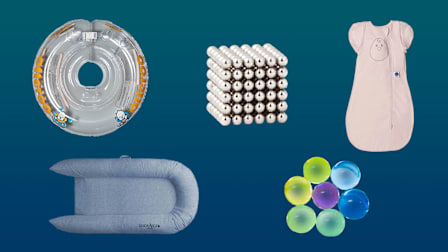‘Non-Toxic’ Labels on Water Beads Are Meaningless
New government research and CR's tests show dangerous chemicals in the popular children's toys

When the Consumer Product Safety Commission warned parents and caregivers about water beads this fall, it cited a panoply of potential risks to children. These tiny, superabsorbent and super-expanding toys can cause intestinal obstruction if swallowed, lung damage if inhaled, or hearing loss if put in the ear, the agency said.
But there is another potential harm to consider, aside from what the beads’ growth inside the body can do. The beads themselves may be toxic.
A mechanical engineer at the CPSC has tested a number of brands of water beads for acrylamide, according to a letter he sent this week to a toy safety standards-setting group. Acrylamide is a known carcinogen that is also toxic to the nervous system, reproductive system, and brain.
The letter comes in the weeks following a Consumer Reports investigation into water beads, which featured the stories of several children who were severely injured after they swallowed or inhaled water beads—and, in one case, died. CR safety experts urged the CPSC to move as quickly as possible to ban them and called on retailers and online platforms to stop selling them. Lawmakers in Congress are also now pushing for a national ban.
Protect Our Kids: Ban Water Beads!
Acrylamide isn’t the only toxic material that has been detected in water beads either.
This summer, Consumer Reports tested samples of several brands of water beads for several known toxins, including lead, chemicals called phthalates, and BPA. We did not detect any of the phthalates or heavy metals, but we did find BPA in six brands of water beads. BPA is a known endocrine disruptor that has been linked to certain cancers and fertility issues.
“We need to set guidelines and limits for BPA in toy products, especially in this case where the risk of ingestion is high based on the incident data,” says Ashita Kapoor, associate director of product safety at CR, who led CR’s water bead tests.
For safety advocates, these test results simply add to a myriad of reasons water beads are too dangerous to kids to be on the market at all.
“Water beads can be deadly if swallowed, but that’s not the only way they can harm children,” says CR’s Wallace. “The risk of toxic exposures is yet another reason why Congress should ban water beads, and why retailers and online platforms should immediately stop selling them.”




















